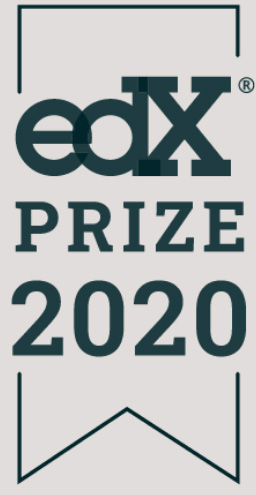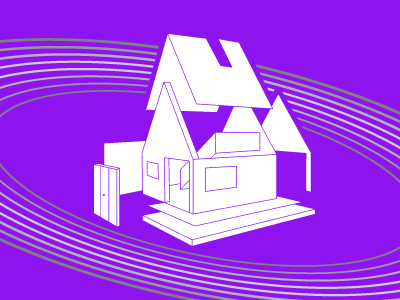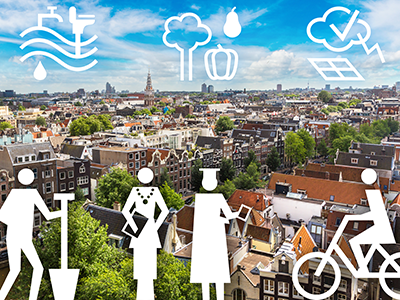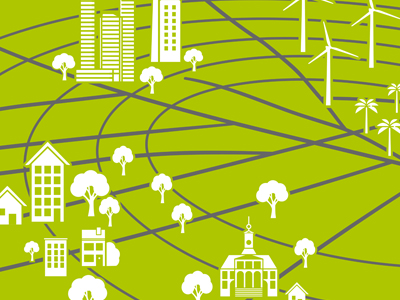Overview
Course video
Learn how to design and validate a net zero-energy building.
The reduction of energy consumption in buildings is an important step in the move towards a sustainable economy. How can buildings be made net-zero- energy, in different climates?
This course will teach you how to design a zero-energy climate concept for existing buildings by using a stepped approach. It will demonstrate how an integrated approach, which takes into account both passive measures (such as thermal insulation and sun shading) and active measures (such as heat pumps and photovoltaic panels), can deliver the best results.
Not only will you develop zero-energy designs, you will also learn how to validate your design with energy performance calculations. The DesignBuilder software tool will be used, together with an Excel tool developed for this course, which facilitate the calculation of the combined effect of all energy measures. The DesignBuilder license will be provided when you take this course, you can use the license for free for one full year.
This will help architects, architectural designers, building engineers and BIM practitioners to design realistic performative net-zero-energy buildings.
In the course, quantitative reviews of several case studies of zero-energy buildings in the Netherlands will be provided, which will demonstrate what trade-offs are made in each design in the combinations of available measures to suit local climate conditions. The lessons learnt are also applicable for other climates. You will learn which measures are most suitable for individual buildings under local climate conditions.
Each week the course team will offer webinars and live studios for feedback and questions. Each participant can also request individual consultation.
What You'll Learn
- to apply zero-energy design principles
- to make energy performance calculations of the proposed (re)design
- how to use DesignBuilder as a software tool for energy calculations
- to use DesignBuilder calculation results in the zero-energy (re)design
- to substantiate and rationalize design choices
- to detail specific solutions
Quotes from learners
“The course helped me understand some fundamental aspects behind the energetic engineering of buildings, extending my knowledge in a critical field that has to do with the performance of our constructions.” - Diogo Teixeira, Architect from Portugal
“I was looking to expand my knowledge of net zero design and to aid in my current line of work. This course increased my knowledge of net zero systems and their integrated design. It offered both- theoretical and hands-on (software application) classes which greatly aided in the overall learner process. The course structure was very engaging and easy to follow. So take the opportunity and get ready to learn!“ - Joseph Tanel, Energy Analyst from Canada
Award:

Andy van den Dobbelsteen, Eric van den Ham and Tess Blom (Faculty of Architecture and the Built Environment) are the winners of the 2020 edX Prize for Exceptional Contributions in Online Teaching and Learning, with their online course "Zero-Energy Design: an approach to make your building sustainable". Their MOOC is designed to help participants figure out which energy measures can be applied to make their buildings (more) sustainable and zero-energy consuming.
Learners who previously completed MOOC Zero- Energy Design can save 2 hours of effort per week in this Professional Course.
Details
Course Syllabus
Week 1: Energy in the built environment
Introduction to Zero-Energy Design and the DesignBuilder software tool.
Analyze the energy consumption of a selected building.
Week 2: Research
Analyze the local climate and examples of vernacular architecture.
Week 3: DesignBuilder
Getting started with DesignBuilder.
Week 4: Reduce
Select both passive and active measures to reduce the energy demand, such as thermal insulation and sun shading. Use DesignBuilder to calculate the savings that could be achieved.
Week 5: Reuse
Overview of the opportunities to reuse energy flows within buildings and to exchange energy between different buildings (energetic programming). Calculate the potential savings with DesignBuilder.
Week 6: Produce
Overview of the opportunities to produce heat and electricity in the building and calculate the output generated using the ZED Excel tool.
Week 7: integrate
Apply all the measures from the previous weeks in designing an integrated net- zero-energy concept for the selected building.
Week 8: Wrap up
Qualifications
Certificates and CEUs
Professional education course with verified certificate.
The TU Delft Extension School offers Continuing Education Units for this course. Participants who successfully complete the course requirements will earn a Certificate of Completion and are eligible to receive 3.0 Continuing Education Units (3.0 CEUs).
Chartered Engineering Competences
All our online courses and programs have been matched to the competences determined by KIVI’s Competence Structure, a common frame of reference for everyone, across all disciplines, levels and roles.
These competences apply to this course:
- A1: Extend your theoretical knowledge of new and advancing technologies.
- B3: Manage implementation of design solutions, and evaluate their effectiveness.
- E3: Undertake engineering activities in a way that contributes to sustainable development and a circular economy.
Admission
This course is primarily geared towards working professionals.
Expected prior knowledge
A basic level of knowledge of building physics is required.
Contact
If you have any questions about this course or the TU Delft online learning environment, please visit our Help & Support page.



